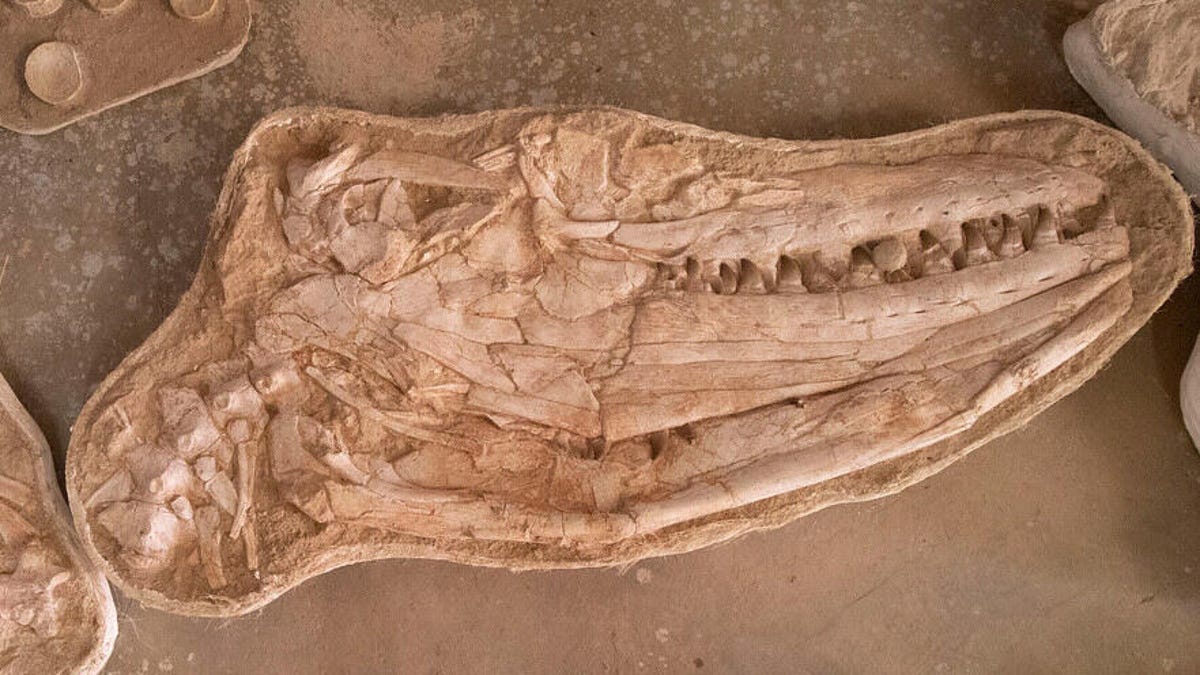Fossils of 'Amazing, Terrifying' Killer Sea Lizard Found in Morocco
"Imagine a Komodo dragon crossed with a great white shark crossed with a T. rex crossed with a killer whale."
A long time ago, in the sea at what's now Morocco, a beast of an animal -- a mosasaur -- ruled the waters. Not a dinosaur, it was a marine lizard, and it would eat its prey and spit out the bones. Hard core.
A team of researchers led by paleontologist Nick Longrich of the University of Bath described a jumbo new mosasaur, Thalassotitan atrox, in a study published online in the journal Cretaceous Research this week. "At the end of the Cretaceous period, 66 million years ago, sea monsters really existed," the university said in a statement Wednesday.
Thalassotitan atrox was an apex predator that would have terrorized prey and probably gotten into fights with its own kind.
The new mosasaur would have thrived in the water at the same time T. rex was on land. "Thalassotitan was an amazing, terrifying animal," said Longrich. "Imagine a Komodo dragon crossed with a great white shark crossed with a T. rex crossed with a killer whale."
Mosasaurs were absolute units. Thalassotitan grew to almost 30 feet (9 meters) in length. As an apex predator, it would have snacked on other marine reptiles using its gigantic, orca-like teeth and hinged lower jaw. Fossils show the animals' teeth were ground down, an indication of damage from chomping on the bones of their prey.
There's a lot going on in the fossil beds where Thalassotitan was preserved. The researchers suspect they've also found evidence of the giant's prey: a large fish, a sea turtle, a plesiosaur (another marine reptile) and bits of other mosasaur species, all showing signs of acid damage. That suggests they spent time marinating in Thalassotitan's stomach. Longrich called the acid damage and proximity of the prey animals to Thalassotitan's fossils "circumstantial evidence," but said it probably wasn't a coincidence.
Paleontologist Nick Longrich poses with the fossil remains of a Thalassotitan atrox.
Morocco is a hot spot for mosasaur fossils. In a blog post, Longrich noted as many as 30 species of the marine reptiles might have lived there. Thalassotitan atrox is a particularly intriguing entry in the fossil record thanks to what scientists have deduced about its eating habits. Sea turtles, yum.


